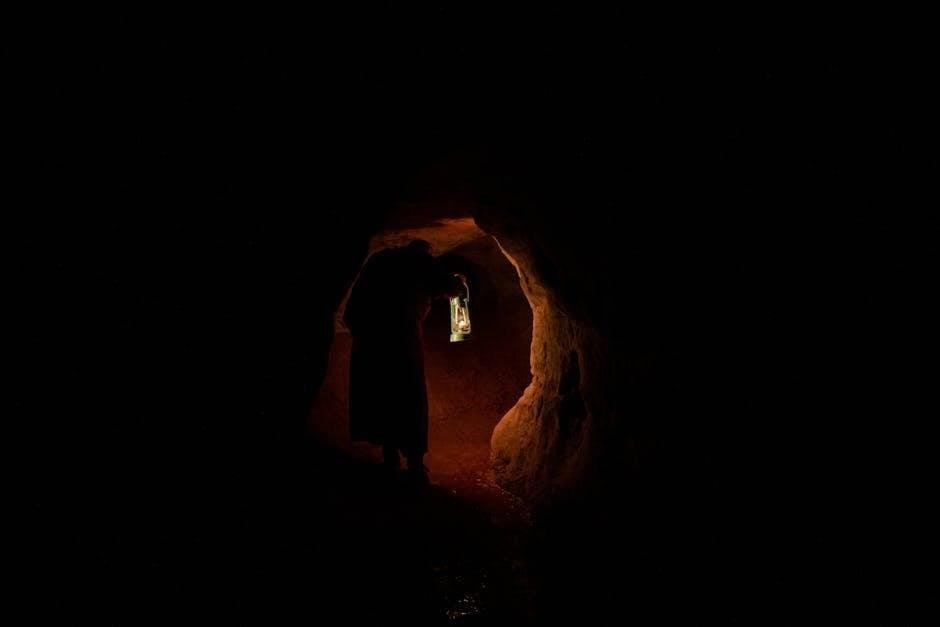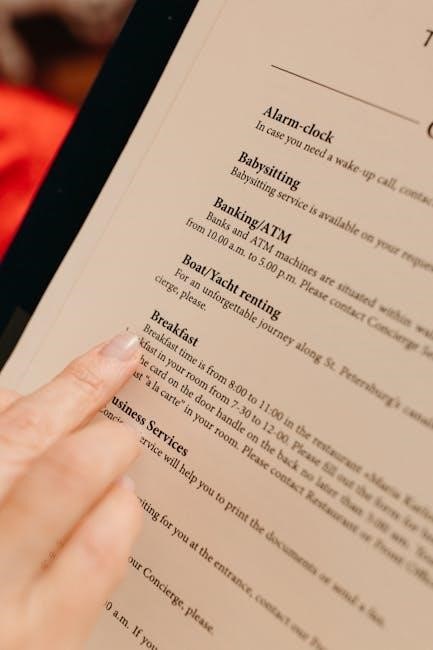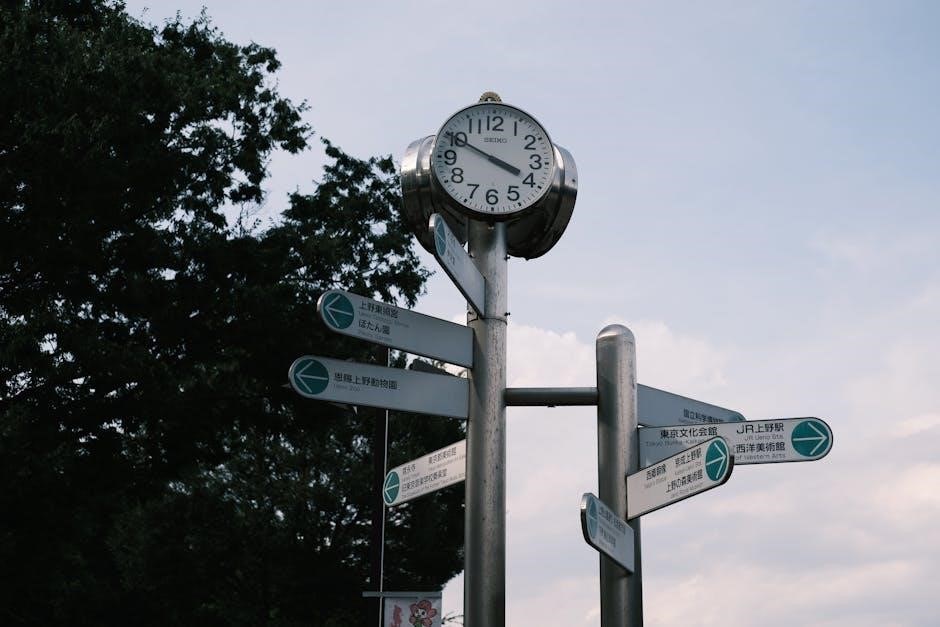Gustav Becker clocks are renowned for their precision and intricate design‚ making them highly sought after by collectors and historians․ These timepieces embody exceptional craftsmanship and historical significance‚ with their unique mechanisms and aesthetic appeal continuing to captivate enthusiasts worldwide․
Who Was Gustav Becker?
Gustav Becker was a German clockmaker and entrepreneur‚ born in 1819 in the Kingdom of Prussia․ He founded the Gustav Becker Clock Factory in 1847 in Freiburg‚ Silesia‚ which quickly became one of the most prominent clock manufacturers in the world․ Becker’s commitment to precision‚ innovation‚ and quality earned his clocks numerous awards and a reputation for excellence․ His company produced a wide range of timepieces‚ from intricate wall clocks to grand grandfather clocks‚ each showcasing exceptional craftsmanship․ Becker’s legacy endures as his clocks remain highly sought after by collectors and historians‚ offering a glimpse into the golden age of horology․
The Historical Significance of Gustav Becker Clocks
Gustav Becker clocks hold a monumental place in horological history‚ exemplifying exceptional craftsmanship and precision․ As one of the most prolific clockmakers of the 19th century‚ Becker’s timepieces were celebrated for their reliability and artistic design․ His factory played a crucial role in popularizing clock ownership‚ making high-quality timekeeping accessible to the masses․ Becker’s clocks were awarded at international exhibitions‚ solidifying their reputation as masterpieces of German clockmaking․ Today‚ they are treasured by collectors worldwide‚ serving as a testament to the golden age of mechanical horology and the enduring legacy of Gustav Becker’s innovative spirit․
A Brief History of Gustav Becker Clocks

Founded in 1850‚ Gustav Becker’s company became a leading clockmaker‚ known for precision and design‚ transitioning from mechanical to industrial production‚ and gaining international acclaim․
Early Years and Founding of the Company

Gustav Becker founded his clockmaking company in 1850 in Freiburg‚ Silesia (now Świebodzice‚ Poland)․ Initially focusing on mechanical clocks‚ Becker quickly gained recognition for his precision and innovation․ By the late 19th century‚ the company had become one of the largest clock manufacturers in the region‚ producing high-quality timepieces that combined durability with elegant design․ Becker’s commitment to excellence and attention to detail laid the groundwork for the company’s global reputation‚ making it a trusted name among clock enthusiasts and collectors today․
Key Milestones in the Company’s Development
Gustav Becker’s company achieved significant milestones‚ solidifying its legacy in horology․ By the 1860s‚ Becker had introduced groundbreaking mechanical movements‚ earning numerous accolades at international exhibitions․ The company expanded its product line in the late 19th century‚ incorporating innovative features like strike mechanisms and elaborate chimes․ Becker’s clocks became synonymous with quality‚ capturing a substantial share of the global market․ The early 20th century saw the introduction of precision regulators and synchronized timekeeping systems‚ further cementing the company’s reputation․ These milestones not only showcased Becker’s technical prowess but also established his clocks as timeless masterpieces cherished by collectors․

Identifying Gustav Becker Clocks
Gustav Becker clocks are recognized by their distinctive signatures‚ unique model numbers‚ and exceptional craftsmanship‚ making them easily identifiable among antique timepieces․

Signature and Markings
Gustav Becker clocks are often identified by their distinctive signatures and markings‚ which provide valuable clues about their origin and authenticity․ The founder’s name‚ “Gustav Becker‚” is frequently inscribed on the clock’s dial or movement‚ along with the company’s name and location․ Some models feature serial numbers or specific designations that indicate production dates and types․ Over time‚ the markings evolved‚ with later pieces sometimes including additional details like patent information or model numbers․ Collectors and historians carefully examine these markings to verify the clock’s legitimacy and determine its historical context․ Buyers are advised to look for these identifying features to ensure they are purchasing an authentic Gustav Becker timepiece․
Model Numbers and Serial Codes
Gustav Becker clocks often feature unique model numbers and serial codes that aid in identification and dating․ These codes are typically found on the clock’s movement or backplate and provide crucial information about the timepiece’s production․ By cross-referencing these codes with historical records‚ collectors and historians can determine the clock’s age‚ model type‚ and production details․ The serial codes‚ in particular‚ are essential for verifying authenticity and understanding the clock’s lineage․ These numerical identifiers are a key part of the clock’s identity and are highly valued by enthusiasts seeking to authenticate and date their Gustav Becker timepieces accurately․
Distinctive Features and Design Elements

Gustav Becker clocks are celebrated for their exceptional craftsmanship and unique design elements․ Many feature intricate carvings‚ ornate details‚ and classic styles that reflect the era of their production․ The clocks often incorporate high-quality materials‚ such as polished brass and walnut wood‚ which enhance their durability and aesthetic appeal․ Their mechanisms are renowned for precision engineering‚ making them both functional and decorative pieces․ The balance between timeless design and technical excellence sets Gustav Becker clocks apart‚ ensuring they remain highly collectible and admired for their beauty and historical significance․ These distinctive features make each clock a testament to the craftsmanship of its time․
Gustav Becker Clock Types

Gustav Becker crafted a variety of clocks‚ including wall‚ mantel‚ and grandfather clocks‚ each showcasing exceptional craftsmanship and timeless design‚ appealing to both function and aesthetics․
Wall Clocks
Gustav Becker’s wall clocks are celebrated for their elegant design and robust craftsmanship․ Often constructed from high-quality materials like oak or walnut‚ these clocks feature intricate carvings and ornate details․ Many models incorporate weight-driven or spring-driven mechanisms‚ ensuring precise timekeeping․ Their classic designs‚ often inspired by Victorian-era aesthetics‚ make them a popular choice for collectors․ The wall clocks are known for their balanced proportions and harmonious blend of form and function․ Collectors appreciate their historical significance and the ability to blend seamlessly into both traditional and modern interiors․ Becker’s wall clocks remain highly sought after for their durability‚ style‚ and enduring appeal to horology enthusiasts․
Mantel Clocks
Gustav Becker’s mantel clocks are admired for their refined craftsmanship and timeless appeal․ These clocks typically feature intricate engravings and ornate detailing‚ often in neoclassical or Victorian-inspired designs․ Constructed from high-quality materials such as walnut or mahogany‚ they blend seamlessly into sophisticated interiors․ Many models boast spring-driven movements‚ ensuring accurate timekeeping․ The compact yet elegant design of Becker’s mantel clocks makes them highly desirable for both functionality and décor․ Collectors appreciate their historical charm and the precision engineering that has become synonymous with the Becker name․ Mantel clocks by Gustav Becker are not only functional timepieces but also exquisite pieces of art that reflect the era’s dedication to horological excellence․
Grandfather Clocks
Gustav Becker’s grandfather clocks are iconic for their stately presence and exceptional craftsmanship․ These tall‚ floor-standing timepieces feature intricate mechanical movements and are often adorned with elaborate engravings and ornate details․ Typically constructed from rich materials like oak or walnut‚ they boast large‚ enamel dials and weight-driven mechanisms that ensure precise timekeeping․ Many models include chimes and astronomical features‚ adding to their sophistication․ Becker’s grandfather clocks are highly prized by collectors for their historical significance and enduring elegance․ Their robust construction and classic designs make them a timeless addition to traditional interiors‚ blending functionality with artistic beauty seamlessly․

Gustav Becker Clock Pricing Guide

This guide provides insights into the value of Gustav Becker clocks‚ helping collectors and enthusiasts understand pricing based on condition‚ rarity‚ and historical significance․
Factors Influencing Value
The value of Gustav Becker clocks is influenced by several factors‚ including rarity‚ condition‚ and historical significance․ Models with intricate craftsmanship or unique designs tend to command higher prices․ The clock’s provenance‚ such as ownership history or documentation‚ can also enhance its value․ Additionally‚ market demand‚ auction trends‚ and the overall condition of the timepiece play significant roles․ Restoration quality and originality of parts are crucial‚ as collectors often seek pieces that retain their authenticity․ The presence of functional complications‚ such as chiming mechanisms or astronomical features‚ further increases desirability․ Economic conditions and collector preferences also impact pricing‚ making each Gustav Becker clock a unique asset․
Price Ranges for Common Models
Gustav Becker clocks vary in price depending on the model and condition․ Common wall clocks typically range from $200 to $800‚ while mantel clocks can fetch between $300 and $1‚200․ Grandfather clocks‚ being more intricate‚ often sell for $1‚000 to $3‚500․ Rare or limited edition models‚ such as those with unique carvings or complications‚ can exceed $5‚000․ Restoration quality‚ functionality‚ and historical significance also impact pricing․ Auctions and market trends often dictate final sale prices‚ making these timepieces valuable additions to any collection․
Rare and Limited Edition Models
Rare and Limited Edition Models
Rare and limited edition Gustav Becker clocks are highly coveted by collectors due to their unique features and historical significance․ These models often boast intricate carvings‚ exclusive designs‚ or special mechanical movements․ Prices for such timepieces can exceed $10‚000‚ especially if they are in pristine condition or have documented provenance․ Limited editions‚ produced in small quantities‚ are particularly sought after‚ with certain models fetching premiums at auctions․ Collectors and horology enthusiasts prize these clocks for their rarity and craftsmanship‚ making them standout additions to any collection․

Gustav Becker Clock Maintenance and Restoration
Regular maintenance and careful restoration are essential to preserve the functionality and value of Gustav Becker clocks․ Clean mechanisms gently‚ avoid harsh chemicals‚ and use appropriate tools to ensure precision․ Check spring tensions and lubricate as needed‚ while complex restorations may require professional expertise to maintain authenticity and performance․
Common Maintenance Tips
Regularly cleaning the clock’s exterior and internal mechanisms is crucial to prevent dust buildup․ Use a soft‚ dry cloth for the case and gentle brushes for intricate parts․ Lubricate moving components every 2-3 years with high-quality clock oil to ensure smooth operation․ Avoid harsh chemicals or excessive force‚ which can damage finishes or disrupt precision․ Check spring tensions annually and adjust as needed to maintain accurate timekeeping․ For weight-driven clocks‚ ensure weights are properly aligned and not overwound․ Keep the clock in a stable environment‚ away from direct sunlight and moisture‚ to preserve its condition and longevity․ Professional servicing every 5-7 years is recommended for optimal performance․ Always handle the clock with care to avoid accidental damage․ By following these tips‚ you can extend the life and maintain the functionality of your Gustav Becker clock․
Restoration Best Practices
Restoring a Gustav Becker clock requires meticulous care to preserve its historical integrity․ Begin with a thorough inspection to identify damaged or worn components․ Use original or period-appropriate parts whenever possible to maintain authenticity․ For intricate mechanisms‚ consult a professional horologist to ensure proper repair․ Avoid over-polishing or altering the clock’s patina‚ as this can diminish its value․ Test the clock’s functionality after restoration to ensure accuracy and smooth operation․ Document the restoration process for future reference and to retain the clock’s provenance․ Regularly inspect and maintain the clock post-restoration to prevent further deterioration․ Preservation of historical craftsmanship is key to honoring Gustav Becker’s legacy․



0 Comments